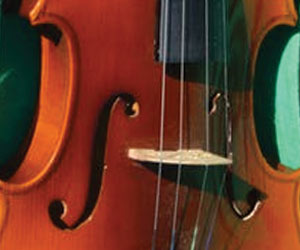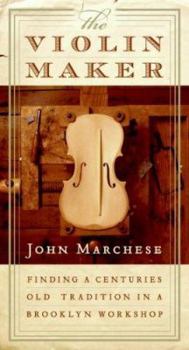The Violin Maker: Finding a Centuries-Old Tradition in a Brooklyn Workshop
Select Format
Select Condition 
Book Overview
" A] magical, profound, and elegant look at the continued need for high quality in our throw away society." --Douglas Brinkley, Historian This intensely human story, which moves from an ageless workshop in Brooklyn to the rehearsal rooms of Carnegie Hall and Lincoln Center, and across the globe to Cremona, the birthplace of Stradivari, opens up for the reader the insular and fascinating realm of music, musicians,...
Format:Hardcover
Language:English
ISBN:0060012676
ISBN13:9780060012670
Release Date:March 2007
Publisher:Harper
Length:240 Pages
Weight:0.95 lbs.
Dimensions:0.9" x 5.0" x 9.0"
Customer Reviews
5 ratings
The Violin Maker: Insightful. Humble. Informative & Cleverly done.
Published by Thriftbooks.com User , 14 years ago
Don't hesitate over this one, you will enjoy it I'm sure. It is a great story as well as being highly informative about the Violin world.
The "magic box"
Published by Thriftbooks.com User , 16 years ago
It's very hard to write a book about someone else carving a violin and make it interesting reading for the general public, but John Marchese has done it. His book pulls the reader in by weaving three stories together in a compellingly artful way: the story of his own unfolding understanding of violins and violinists; a restrained description of the making of a violin; an exploration of a violinist and his desire for ideal tone. This is the tale of a master carver, Sam Zygmuntowicz, and a concert violinist, Eugene Drucker (of the Emerson String Quartet), in their collaborative efforts to create a perfect violin. Marchese's style of writing is fun to read, and propels the reader from chapter to chapter effortlessly and satisfyingly--he manages to balance the three stories evenly. (Is it my imagination, or is this unusually narrow book itself based on the proportions of a violin? Just one more thing to add to the physical enjoyment of reading the book!) Rather than focusing too much on technical details of violin making (he kindly refers interested readers to several books that cover this territory), he merely opens a window into the quirky world of a single violin maker's studio, describing the most interesting aspects of the work (the selection of wood, the `secrets' of varnishing) with verve and wit. Likewise, in describing the professional violinist's relationship with sound and with instruments, he has deftly painted a portrait of a single artist, but one whose search for the `right' instrument surely represents the experiences of other instrumentalists. This book is a perfect companion to Toby Faber's "Stradivari's Genius." Without much mental strain, readers will come away from this book with a pretty clear understanding of the complexities of making and playing what he calls at one point "the magical box."
From a father's point of view
Published by Thriftbooks.com User , 16 years ago
My son, now 17 has been playing his Great-Great Grandfather's violin for 8 years. Though I love how he plays, he feels he needs a replacement. I didn't know much about violins, so... my first step was to read about it. I picked up John Marchese's book for many reasons, one of which was to get a feel for what we should be looking for with the replacement. I was thrilled at how the book was written, the information it contained and the "easy read" of it. It gives great credit to Sam Zygmuntowicz along with all of those who work to create the magical boxes. I enjoyed it and it definitely had influence on how we will proceed with my son's next violin. Thank You.
The violin Maker
Published by Thriftbooks.com User , 17 years ago
This is a gift for our grandson who is an accomplished violinist and at one point in his life (11 yrs. old) attempted to construct a violin. We know that he will enjoy reading this book.
Great insight into the mind and craft of a luthier
Published by Thriftbooks.com User , 17 years ago
Sam Zygmontowicz is one of the great contemporary violinmakers, and John Marchese has more than done him justice in describing the process of his making a violin (for the Emerson String Quartet's first violinist, Gene Drucker). In the process, Marchese takes us not only into Zyg's studio, but also to Cremona, the birthplace of the violin in its modern form (in the 1560s) and the home of the three greatest families of violinmakers--Amati, Stradivari, and Guarneri. In addition, Marchese reports on his meetings with Drucker, who commissioned the violin, and on Drucker's reaction to his new instrument--which complements the Strad on which he had been playing but cannot, in his opinion, fully replace it.
The Violin Maker: Finding a Centuries-Old Tradition in a Brooklyn Workshop Mentions in Our Blog

12 Reasons Why Stradivarii Sing in Celebration of National Violin Day
Published by Beth Clark • December 13, 2018
With only 500 left in the world, the ethereal and legendary Stradivarius violin is a work of alchemical art that some of us will get to see, a few will get to hear, and a handful may get to touch, but only the true elite of the musical world (or the extremely rich) will ever get to play. Below are 12 reasons why Stradivarii are unique and worthy of reverence.





